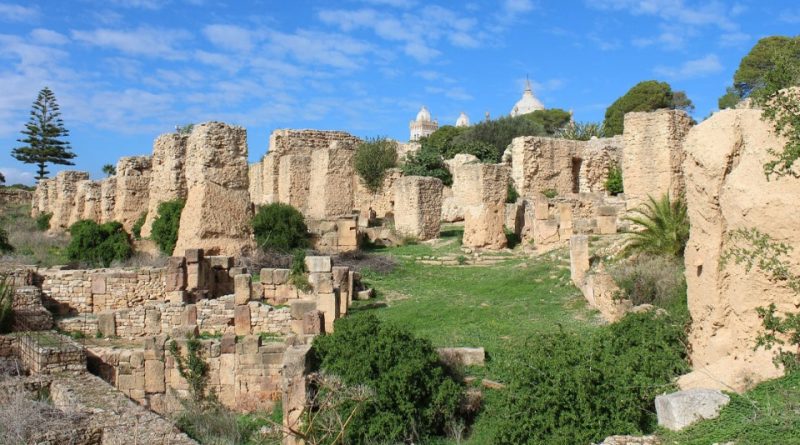The Carthaginians and agriculture
The Carthaginians and agriculture
The Carthaginians were an ancient Phoenician people originally from Carthage, an important city-state located in what is now Tunisia. Founded around 814 BC, Carthage became a maritime and commercial power in the western Mediterranean, competing with the city of Rome for control of the region.
The Carthaginians were skilled navigators, traders and colonizers, establishing colonies along the Mediterranean coasts and controlling important trade routes. Their economy was based primarily on maritime trade, and their naval fleet was among the most powerful of antiquity.
However, relations between Carthage and Rome were often tense, and eventually led to the Punic Wars, a series of conflicts involving both powers that ended with Carthage’s defeat and destruction in 146 BC.
History –
The history of the Carthaginians is one full of intrigue, trade and conflict that took place in the ancient city of Carthage, located in what is now Tunisia. Founded around the year 814 BC. from Phoenician settlers led by princes from the mother city of Tire (in present-day Lebanon), the Carthaginians soon became a maritime power in the western Mediterranean.
Carthage prospered thanks to its strategic position and its control of maritime trade, becoming one of the richest and most influential cities of antiquity. Its traders and navigators explored and established colonies in various parts of the Mediterranean, including regions such as Spain, the Balearic Islands, Sicily, and Sardinia.
However, the success of the Carthaginians also led to conflicts with other powers of the time, particularly the Roman Republic. The wars between Carthage and Rome, known as the Punic Wars, defined much of the history of the ancient Mediterranean.
The First Punic War (264-241 BC) was primarily a struggle for control of Sicily. Despite some initial successes by the Carthaginians, Rome ultimately prevailed, gaining control of the island and paving the way for further conflict.
The Second Punic War (218-201 BC) was led by one of the most famous military commanders of all time, Hannibal, son of Hamilcar Barca. Hannibal led his troops across the Alps and invaded Italy, inflicting heavy defeats on the Roman army. However, in the end, Rome managed to resist and fight back, defeating Hannibal at the Battle of Zama in 202 BC.
The Third Punic War (149-146 BC) led to the final destruction of Carthage. Despite the Carthaginians’ efforts to strengthen their defenses, Rome, led by Scipio the Aemilianus, captured the city after a long siege. Carthage was completely destroyed and the region became a Roman province.
Despite Carthage’s demise as an independent city-state, its cultural and commercial influence spread throughout the Mediterranean, influencing subsequent civilizations. The history of the Carthaginians is therefore a significant part of the panorama of the ancient history of the western Mediterranean.
Agriculture –
Carthaginian agriculture represented a crucial element of the economy and society. Carthage was a commercial and military power in the western Mediterranean, and its agriculture was critical to supporting its population and trading empire.
The lands around Carthage were fertile and suitable for agriculture, thanks to the presence of rivers such as the Bagradas (today called Medjerda) which provided water for irrigation. The Carthaginians grew a variety of agricultural products, including wheat, barley, olives, vines, and fruit. They also had a sophisticated system of terracing and canalization to maximize agricultural production in the mountain areas.
A distinctive aspect of Carthaginian agriculture was the intensive use of slave labor. Carthage depended heavily on slavery to work its agricultural lands and fuel the economy. Slaves were used for tasks such as planting, harvesting, and processing agricultural products.
Furthermore, the Carthaginians were known for their agricultural trade. They exported products such as olive oil, wine and cereals to other regions of the Mediterranean and North Africa, thus contributing to the city’s economic prosperity.
However, despite Carthage’s agricultural and commercial wealth, agriculture was also a source of social and economic tension. Slavery and social inequalities caused by the concentration of land and wealth in the hands of a few aristocrats contributed to the city’s internal instability, which ultimately contributed to its decline and destruction during the Punic Wars with Rome.
Agricultural tools and crops –
The Carthaginians used a variety of agricultural tools and grew various crops to support their economy and trading empire. Some of the agricultural tools and crops used by the Carthaginians (highlighted by archaeological finds and finds) were represented by:
Plows: The Carthaginians used plows to plow the land and prepare it for planting. Plows could vary in design and materials depending on the resources available in the region.
Hoes and spades: Hand tools such as hoes and spades were used to work the soil, remove weeds and prepare flowerbeds for planting.
Sickles: Sickles were used to reap crops, such as wheat and barley. These tools allowed farmers to effectively cut plants ripe for harvest.
Mowers: They may have used more advanced tools, similar to mowers, to increase harvesting efficiency.
Seeds and Cultivated Plants: Crops grown by the Carthaginians included wheat, barley, grapes, olives, figs, legumes, and other vegetables. These crops were fundamental for feeding the population and for trade with other regions of the Mediterranean.
Irrigation: Because the region could be arid, the Carthaginians developed irrigation systems to ensure an adequate supply of water for their crops. These systems included canals, wells, and cisterns.
Terraces: In some hilly areas, the Carthaginians built terraces to grow their crops on sloping terrain, reducing soil erosion and maximizing the space available for cultivation.
Preservation: The Carthaginians developed methods to preserve their crops, such as drying, preserving in olive oil, and brining for food.
These are, of course, just a few examples of the agricultural tools and crops used by the Carthaginians. Their skill in agriculture contributed to their economic success and their ability to maintain a vast trading empire in the western Mediterranean.
Guido Bissanti

